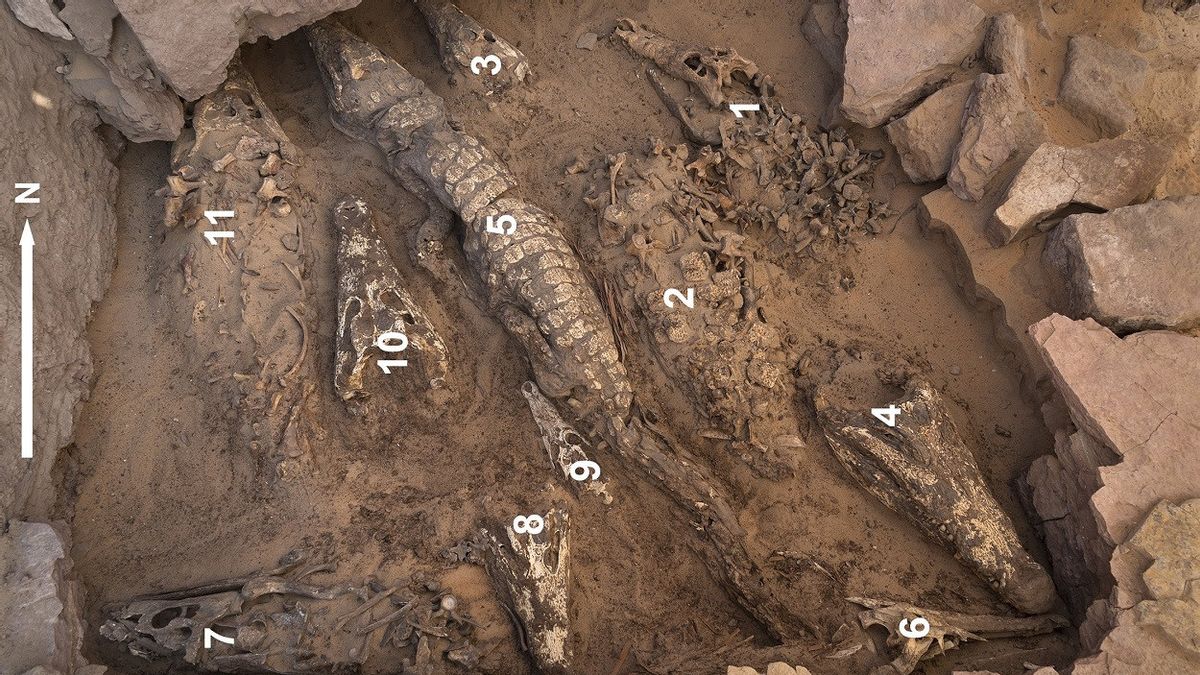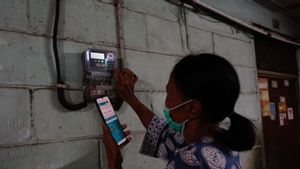JAKARTA - The ten crocodile mummies excavated in southern Egypt are different from the remains of the mummy of other animals, experts say.
Five largely intact adult crocodiles and five skulls were found under the Byzantine waste disposal site at the Qubat Al Eve site on the banks of the Nile, across Aswan in 2019.
A study published in an American scientific journal on Wednesday said the remains were most likely stationed there by Egyptian representatives Sobek.
The crocodile mummy is unique in its minimal preparation before burial, study author Dr. Bea De Cupere told The National News, as quoted January 20.
"There is no evidence of a specially prepared mummy," he explained.
"There is no indication that the intestines have been removed and there are no traces of used Bitumen," he explained. Bituments are often used for mummification.
Dr. De Cupere said, one of the most interesting aspects of this discovery is the various conditions of preservative.
While some of the remains were only skulls, others were all well-preserved bodies.
The remains were not covered with resin before burial, the practice of general mummification that developed during Egypt was short (305-30 BC). This led Dr De Cupere and his colleagues to believe that crocodiles were buried before the situation period, leaving them at least 2,300 years old.
He told The National News his team could not confirm the age of the skull mummy until they performed carbon dating on the specimens, which he hopes will soon occur.
The remains, which consist of two different crocodile species, are most likely killed elsewhere and then placed on the surface or buried in the sand until dry, explains Dr. De Cupere.
They were then wrapped in focus and mats from palm leaves and taken to the tomb where they were buried.
Over the years the drum was shattered, meaning the team could study crocodiles at the excavation site without the need to scan to see past braids, as was the case with other discoveries of this kind.
Crocodiles have a special position in ancient Egyptian culture. Apart from being considered the embodiment of Sobek on earth, whose worship often buried officials with crocodile mummies, they were also feared.
It is possible that the crocodile found in 2019 was placed there by Sobek devotees, Dr De Cupere's team said in the study.
The remains excavated are also adult crocodiles. Of the approximately 300 or more crocodile mummies, about 80 percent come from adolescent specimens, often just hatch, the study said, published in the journal 'PLOS One'.
"Ten percent completed, specimens greater than 50 cm to 350 cm long and the remaining 10 percent were head, skull or lower jaw," he said.
Meanwhile, the length of the animal varies between 1.8 meters and 3.5 meters and includes the Nil and West Africa crocodiles, says Dr. De Cupere.
It is known that the Nile crocodile is still found in Egypt's southernmost region, but the West African crocodile no longer exists in the country.
One of the largest specimens measuring more than 2.1 meters long and almost intact, has only suffered minor decays to some of its extremities.
Dr. De Cupere added that he hopes to perform DNA tests on specimens to confirm the species.
The English, Chinese, Japanese, Arabic, and French versions are automatically generated by the AI. So there may still be inaccuracies in translating, please always see Indonesian as our main language. (system supported by DigitalSiber.id)













